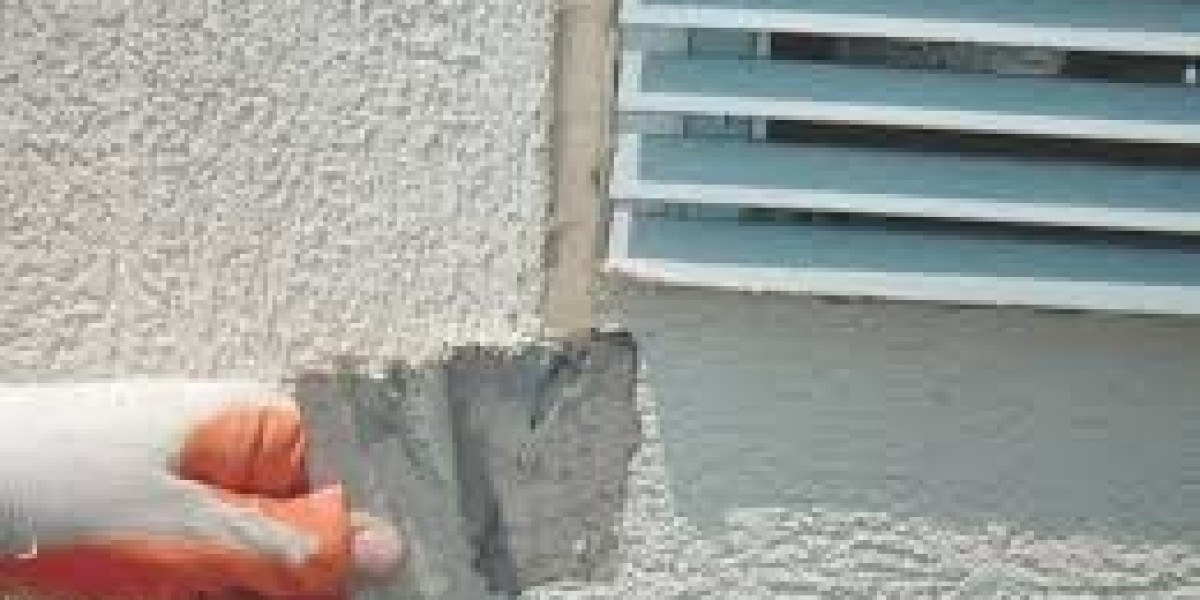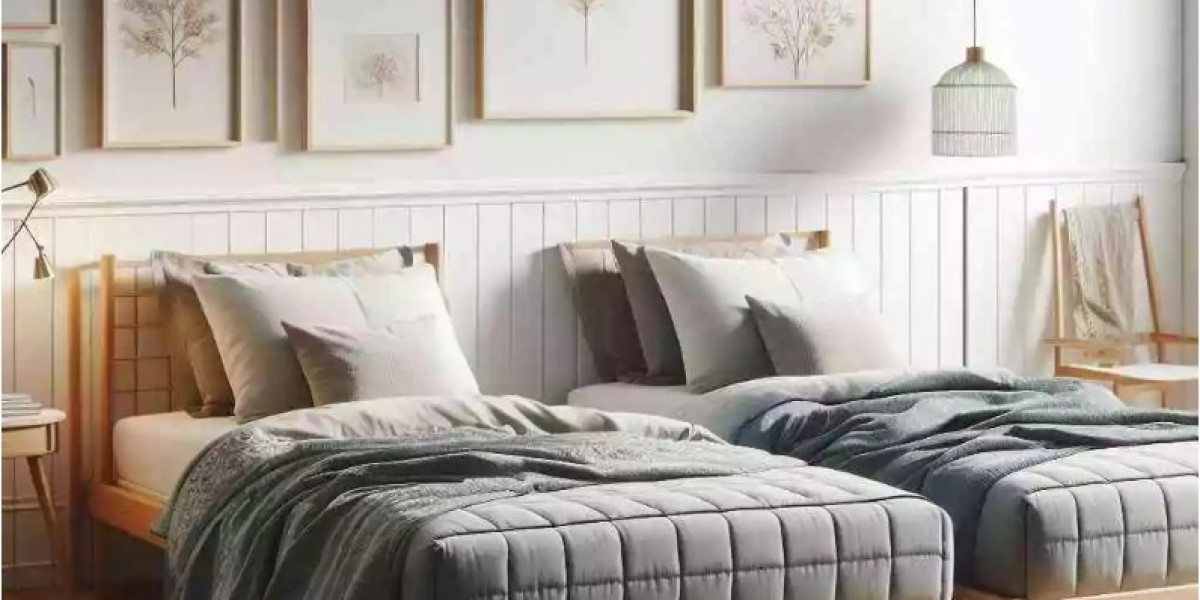Exterior Insulation and Finish Systems, commonly known as EIFS, are praised for their energy efficiency, flexible design, and sleek, stucco-like appearance. But when something goes wrong, the consequences can be serious—and expensive. From moisture intrusion to cracking and mold growth, EIFS damage is a hidden threat to your home’s structural integrity and resale value.
In this guide, we’ll break down everything you need to know about identifying EIFS problems early, why they happen, and how to repair EIFS damage before it turns into a full-blown disaster. Whether you're a homeowner, contractor, or real estate investor, this is your must-read resource for spotting and fixing EIFS issues fast.
What Is EIFS, Exactly?
EIFS stands for Exterior Insulation and Finish System. It’s a type of exterior wall cladding made up of multiple layers:
Insulation board (usually foam)
Base coat (with embedded fiberglass mesh)
Finish coat (textured and colored for visual appeal)
While it looks like traditional stucco, EIFS is actually a synthetic product, designed to provide superior insulation and energy efficiency.
The Appeal of EIFS: Why Homeowners Choose It
EIFS became popular in the U.S. in the 1980s and 1990s, especially in commercial and high-end residential construction. Its key benefits include:
Excellent thermal performance
Design versatility for curves, arches, and intricate details
Lightweight compared to brick or stone
Cost-effective installation
But despite these benefits, EIFS can become a liability when not properly installed or maintained.
EIFS Gone Wrong: The Common Causes of Damage
Many EIFS-related issues stem from one underlying problem: moisture intrusion. Unlike traditional stucco, early EIFS systems (especially those installed before 2000) didn’t allow for drainage. That meant if water got behind the surface, it stayed there—leading to rot, mold, and decay.
Here are the top reasons EIFS systems fail:
1. Poor Installation
Incorrect flashing, improper sealing around windows and doors, or skipping moisture barriers can all result in water getting trapped behind the system.
2. Lack of Drainage
Early EIFS designs didn’t include drainage channels, making them particularly vulnerable in wet climates.
3. Impact Damage
Because EIFS uses foam insulation beneath the surface, it’s more susceptible to dents, cracks, and punctures from hail, stray baseballs, or even a misplaced ladder.
4. Incompatible Materials
Using incompatible caulks, paints, or repairs can lead to delamination, peeling, and more moisture issues.
Red Flags: How to Spot EIFS Damage Early
Catching EIFS problems early can save you thousands in repairs. Here’s what to look for during a visual inspection:
1. Cracks and Surface Blemishes
Hairline cracks may seem minor, but they can allow moisture to penetrate beneath the surface. Look closely at corners, edges, and transition points.
2. Bulging or Soft Spots
If the wall feels soft or spongy when you press it, or if you see bulging areas, that’s a strong sign of moisture damage beneath the EIFS.
3. Staining and Discoloration
Dark streaks or patches on EIFS may indicate water intrusion, especially around window sills and rooflines.
4. Mold or Mildew Growth
Visible mold growth on or near EIFS is a major red flag—and usually just the tip of the iceberg.
5. Musty Smells Inside the Home
If moisture has worked its way behind the walls, it can affect your home’s interior air quality. Musty odors are often the first sign homeowners notice.
6. Rotting Trim or Window Frames
When EIFS fails to keep out moisture, surrounding materials like wood trim and window frames can start to rot.
The Hidden Costs of Ignoring EIFS Damage
Letting EIFS issues go unchecked can lead to far more than cosmetic problems. Here’s what’s at stake:
Structural damage to framing, sheathing, and insulation
Mold remediation costs if fungal growth spreads indoors
Lower resale value if EIFS problems are discovered during a home inspection
Skyrocketing repair bills if the entire system needs replacement
If you're thinking about selling your home, know this: EIFS damage is a deal-breaker for many buyers. It raises red flags about hidden defects, and lenders may even hesitate to approve mortgages on homes with known EIFS issues.
Should You DIY EIFS Repairs?
Short answer: not usually. While small patches or re-caulking around windows might be within a skilled DIYer’s wheelhouse, most EIFS problems require professional attention. Here's why:
Diagnosing moisture intrusion requires specialized equipment like infrared cameras and moisture meters.
Proper repairs involve cutting away damaged EIFS, replacing it, reapplying mesh and base coats, and matching the finish texture perfectly.
Mismatched materials or improper techniques can make the problem worse, and hurt resale value.
The Right Way to Fix EIFS Damage
When handled correctly, EIFS repairs can restore your home’s exterior and prevent future issues. Here's what a typical professional repair process includes:
1. Inspection and Moisture Testing
Experts will use tools to locate moisture intrusion, often behind the surface where it’s not visible.
2. Removal of Damaged Sections
Any compromised areas are carefully cut out to expose the substrate and framing underneath.
3. Drying and Mold Remediation
If moisture or mold is found, the area is dried out and treated to prevent recurrence.
4. Reconstruction
New EIFS components are installed—including drainage layers, mesh, base coat, and finish coat—using materials that match the existing surface.
5. Sealing and Caulking
Windows, doors, joints, and rooflines are carefully sealed to prevent future water entry.
6. Final Inspection
A final check ensures the repairs are waterproof, durable, and visually seamless.
EIFS vs. Traditional Stucco: What’s the Difference?
It’s a common misconception that EIFS and stucco are the same. In reality, they’re quite different in terms of composition and vulnerability.
| Feature | EIFS | Traditional Stucco |
|---|---|---|
| Material | Synthetic (foam, mesh, acrylic) | Cement-based plaster |
| Weight | Lightweight | Heavy |
| Energy Efficiency | High (insulated) | Lower |
| Moisture Resistance | Needs drainage to be effective | More breathable |
| Durability | Prone to impact damage | More resistant to minor dings |
Understanding the distinction can help you make better choices about repairs, upgrades, and future siding projects.
EIFS Maintenance Tips to Avoid Future Damage
Proper maintenance can extend the life of your EIFS and reduce the risk of moisture problems. Here’s how to keep your system in top shape:
Inspect annually for cracks, caulking failure, and stains.
Keep gutters clean to prevent water from spilling onto walls.
Re-caulk joints every 3–5 years or as needed.
Avoid pressure washing—it can drive water into the system.
Check landscaping to ensure sprinklers aren’t spraying directly on EIFS surfaces.
When to Replace EIFS Entirely
Sometimes, repairs aren’t enough. If your EIFS is more than 25 years old, or if it has widespread damage and no drainage system, replacement may be your best option.
Modern EIFS systems now include drainage planes and better moisture barriers, making them much more reliable. Replacing older systems with new, properly installed EIFS can not only protect your investment but also enhance curb appeal and boost energy efficiency.
EIFS and Resale Value: What Buyers Should Know
If you're buying a home with EIFS, be sure to:
Request an EIFS inspection by a certified inspector—not just a general home inspection.
Ask for maintenance records and proof of any repairs.
Understand your insurance—some policies may have EIFS-related exclusions.
On the flip side, if you’re selling a home with EIFS, proactive repairs and documentation can go a long way in easing buyer concerns.
Conclusion: Stay Ahead of EIFS Damage
EIFS can be a great asset to your home when it’s in good condition. But when things go wrong, they can go very wrong. The key is to recognize the signs early, understand the root causes, and act quickly with the help of professionals.
Don’t wait for visible damage to take action. Schedule an EIFS inspection with Stucco Repair Tucson if you suspect problems, and be proactive about maintenance. Whether you’re living in your forever home or planning to sell, keeping your EIFS system in top condition protects your property, your wallet, and your peace of mind.
EIFS gone wrong? Not on your watch.








